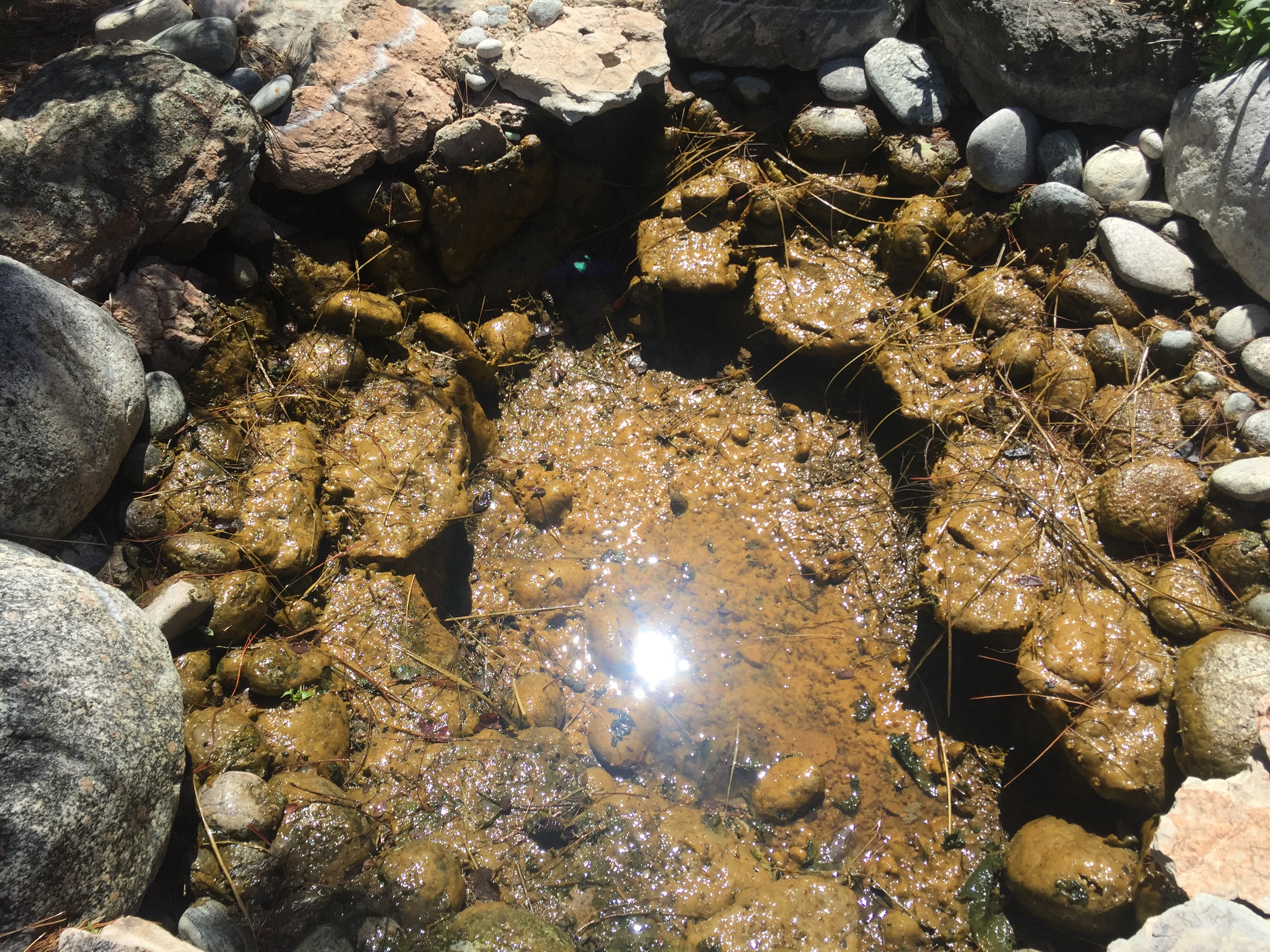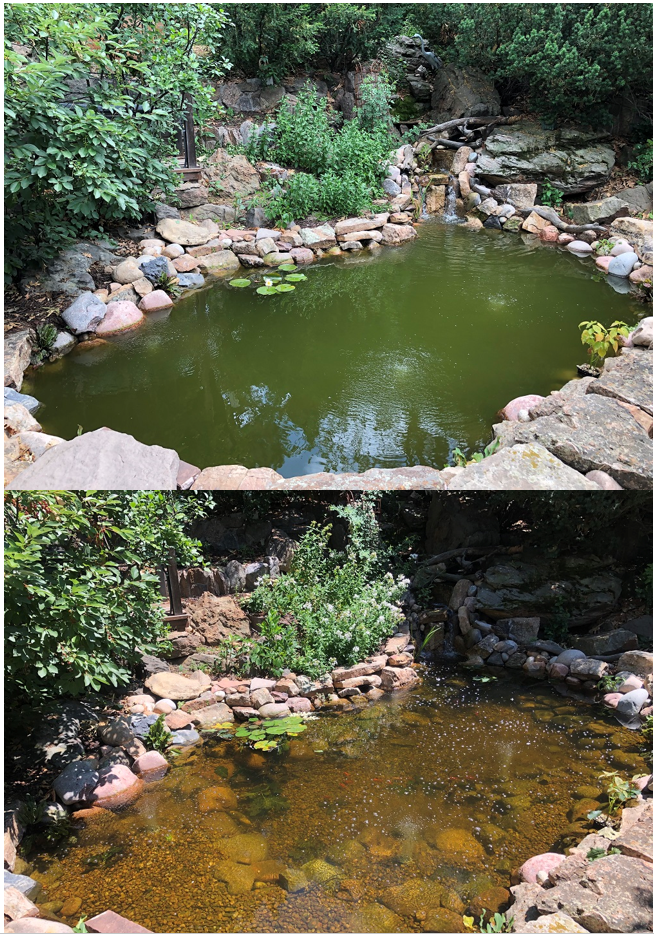Algae happens – what you can do about it:
Did you know that algae is actually a part of the ecosystem? Yes it is! When there is a bit of algae in the pond, it is okay. What we don’t want is for that algae to become an eyesore that takes away from the beauty of the feature. There are literally thousands of kinds of algae. We are going to categorize it in the simplest way possible. You can also compare your algae to the algae in our ALGAE GALLERY!| Description | What it is | Possible causes | What to try | |
| Green cloudy water | Microbial Algae | Overfeeding fish Unbalanced Ecosystem Lack of beneficial bacteria Too many fish in pond Recent heat wave | Try cutting back on fish feeding. Click HERE for more information on fish. Try adding plants like floating hyacinth and floating lettuce for natural filtration. This suspended algae can also be captured by adding a very fine filter to the front of the skimmer for a day and then removed. Adding Flocculant helps because it causes the algae to bind together, making it easier to remove from the pond. | |
| Clear water that is tinted green | Short green algae on rocks makes water look green. | Ecosystem is on the way to being balanced, but isn’t quite there. Lack of beneficial bacteria Too much nitrogen in pond Recent heat wave | Try adding lots of plants, like floating hyacinth and floating lettuce for natural filtration. They will use up the extra nitrogen. Bump up your beneficial bacteria by adding it every 3 days for a couple of weeks. Remember, it can take consistency and time for a pond to get into balance. | |
| String algae | String Algae | Overfeeding fish Unbalanced Ecosystem Lack of beneficial bacteria Too many fish in pond | Installing an Iongen can keep this at bay! Remember, if the string algae is pulled off without treatment of algaecide (use very cautiously) it will spread! | |
| Brown or tea colored water | Tannins | Leaves decaying in pond and other debris create tea colored water If driftwood has recently been added, the tannins may be washing out. | If it is from leaves decaying, the pond needs a cleanout. Activated Pond Carbon (charcoal) may be helpful. If its from driftwood, a water change may help. It can take months for it to subside. | |
| Slimy brown/gold algae like a film that covers gravel and rock It may bubble | Diatomacious | Not enough water movement and aeration Not enough beneficial bacteria Rock that is high in silicates (Flagstone) Lack of fish Pond out of balance | Work to get pond balanced using the 5 Elements of a Healthy pond. (bleach and shock treatment does not work!) Call Colorado Pond Pros right away! | |
| Black water | Heavy, deep organics in pond | Large amount of organic matter decaying in pond. | Pond needs a cleanout | |
| Foam in pond | Off-gassing of liner Kids threw something in? Fish are spawning? | Off-gassing is very common to newly built or relined ponds. Fish spawn generally in the spring. They may seem aggressive towards one another. | Add Pond Foam Free, use for 3 weeks. Tell kids how important it is not to put anything in the pond! The fish will stop spawning and it will go away. | |

Algae blooms occur in early spring when temperatures begin to rise. This happens because other life in the pond is still a bit dormant. Without all aspects of the ecosystem contributing to the health of the pond, algae can go to town! Beneficial bacteria and plants wake up slightly later than the algae does in the spring. Algae may crop up right after there is a big rainstorm. Water runoff from the yard may contain other agents that throw the pond out of balance. A heavy fish load or lack of plants can contribute to string algae growth as well.
Did you know stirng algae can be an indication of a leak? Yes! If you have an autofill and you seem to have an influx of string algae, you might want to find out of there is water loss. See our Leak Information.

Sometimes algae can look realy slimy, almost like peanut butter. We refer to this as diatom algae.

The two photos above, show a pond with microbial algae and the same pond without microbial algae.
Notice how the microbial algae looks like pea soup!
